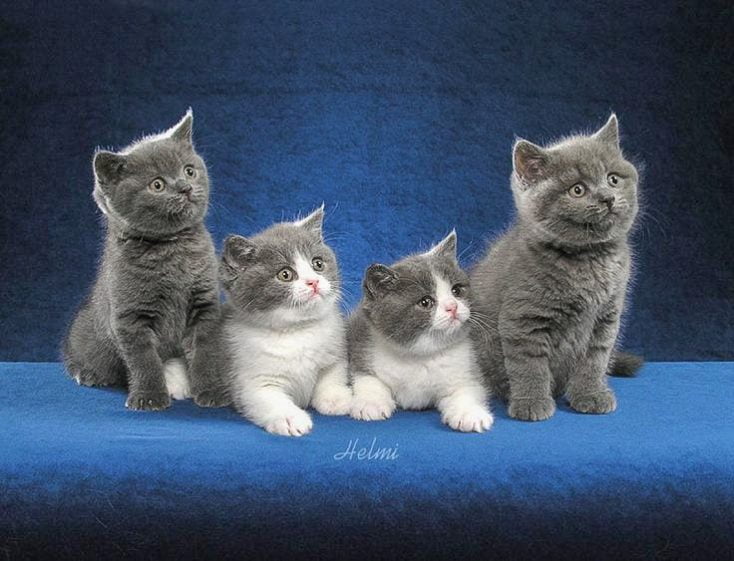Polycystic kidney disease (PKD) is the most common inherited disorder in cats according to a 2015 study. It is present in British Shorthair cats. Both the Persian and the British Shorthair carry the same genetic mutation causing the disease. It is an autosomal dominant mutation in exon 29 of the polycystin-1 gene.
So how did this mutation get into the breeding lines of the British Shorthair? And, further, why does it exist in the first place in Persians? I’ve not seen an answer to the second question but we know the answer to the first.

Dana L. Jacobs in The Cat Fanciers Almanac 1995, tells the story of the British Shorthair in the UK during World War I and World War II. It is these wars which had a dramatically negative impact upon the breeding of this iconic pedigree cat. The breed was a favourite of Harrison Weir, the father of the cat fancy.
British Shorthairs were very successful in the early cat shows and I’m referring to the first cat shows in the world. And the breed was introduced into America in 1901. He was a male, red, tabby, Belle of Bradford. Note: the name should have been ‘Beau of Bradford’ as ‘belle’ is the female version of the word.
After World War I, breeders introduced unregistered domestic shorthair cats i.e. moggies, into their breeding programs because they “had a difficulty finding worthy, registered British Shorthairs to work with”. Comment: I’m not sure how introducing moggies into their breeding lines would have improved the quality of their cats.
As expected, the British Shorthair at that time in the UK lost its type. In other words, it lost the appearance that it should have to be a British Shorthair. And in an effort to regain the appearance of this iconic breed they introduced Persians into the breeding lines. This would have made the British Shorthair more cobby and less slender. The Governing Council of the Cat Fancy objected and would not register the offspring of these British Shorthairs. Subsequently they did after three generations of further breeding which I guess diluted the presence of the Persian genes.
And then along came World War II which also severely upset the cat fancy resulting in breeders trying to bolster the genetic diversity of the British Shorthair by introducing, again, unregistered domestic shorthair cats (moggies). They also outcrossed to other breeds such as the Russian Blue, Burmese and Chartreux. And they also outcrossed to Persians to try and regain the original British Shorthair appearance because outcrossing to the other breeds diluted their appearance as per the breed standard. In both wars the outcrossed Persians introduced the mutated gene causing PKD to Brit SHs.
And therefore, we can blame the world wars for causing the British Shorthair to suffer from polycystic kidney disease. I’ve simplified it because, as mentioned in the opening paragraph, it is a disease which affects all cats both purebred and moggies. Although, because of the breed’s history they are more predisposed to contracting the disease than other cat breeds, as I understand it, other than the Persian and associated breeds such as the Exotic Shorthair and the Himalayan.
RELATED: Polycystic kidney disease; cat’s life expectancy
Polycystic kidney disease (PKD) is inherited and it causes multiple cysts to form on the kidneys. These are pockets of fluid-filled pustules. They grow from small pustules to a much larger version over time and they disrupt kidney function resulting in kidney failure. Kidney failure is one of the most common causes of death in domestic cats, particularly elderly cats.
As PKD is inherited through a genetic mutation and as the mutation is autosomal dominant it only takes one copy of the altered version of the gene to produce PKD in a cat. Generally, 50% of PKD positive cats’ offspring inherit PKD.
Study referred to in the opening paragraph: Polycystic kidney disease in four British shorthair cats with successful treatment of bacterial cyst infection.
Below are some more articles on kidney disease.

